Sticky Postings
By fabric | ch
-----
As we continue to lack a decent search engine on this blog and as we don't use a "tag cloud" ... This post could help navigate through the updated content on | rblg (as of 09.2023), via all its tags!
FIND BELOW ALL THE TAGS THAT CAN BE USED TO NAVIGATE IN THE CONTENTS OF | RBLG BLOG:
(to be seen just below if you're navigating on the blog's html pages or here for rss readers)
--
Note that we had to hit the "pause" button on our reblogging activities a while ago (mainly because we ran out of time, but also because we received complaints from a major image stock company about some images that were displayed on | rblg, an activity that we felt was still "fair use" - we've never made any money or advertised on this site).
Nevertheless, we continue to publish from time to time information on the activities of fabric | ch, or content directly related to its work (documentation).
Wednesday, November 30. 2022
Tuesday, January 29. 2013
Via ArchDaily
-----
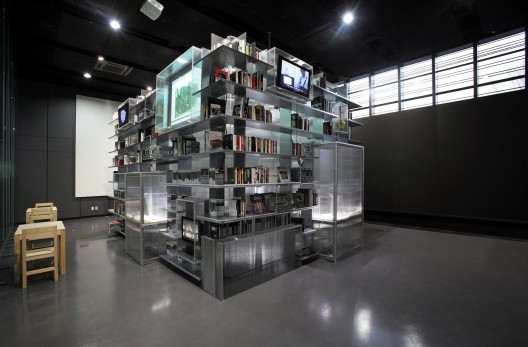
Designed by N H D M / Nahyun Hwang + David Eugin Moon, the Nam June Paik Library is a new public art library in Nam June Paik Art Center in Yong-In, Korea, which opened to the general public in 2011. Inspired by Nam June Paik’s artistic processes, the library was designed as a multi-functional spatial device, which redefines the relationship between library users and information. While the conventional library is characterized by the one directional transmission of the static, centralized, and predefined content, this library aims to promote non-linear and random access to information, and its production beyond the consumption. More images and architects’ description after the break.

The goal of the Nam June Paik Library is to collect, preserve, and provide access to historical and contemporary material related to the history and activities of Nam June Paik and his art. It offers to scholars a space for professional research, and to the local community an open forum for cultural engagement. The library houses and circulates the Center’s Nam June Paik Archives Collection, Nam June Paik Video Archives, and a rare Fluxus Footages Collection, as well as the user generated materials. The design and construction of the library was made possible by City of YongIn and Gyeoggi Province Government’s Small Library Fund.
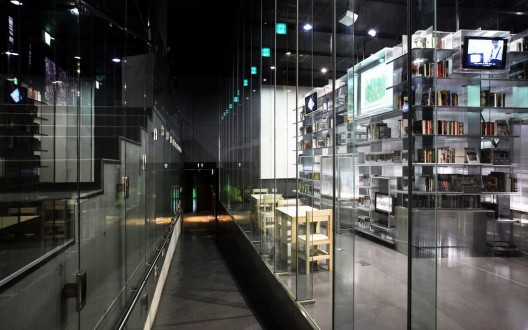
Through spontaneous expression and juxtaposition of ideas, the consumer of information becomes the producer, and the static contents of the library turns dynamic. The collective generation and appreciation of information makes the library experience multi-directional and reciprocal.

The Library Machine located in the center of the library deploys the following 6 architectural and programmatic devices.
1. Scattering – The juxtaposition of the dispersed information produces complexity that contrasts the simple geometric initial form.
2. Non-Textual Content / Off-Site – Objects related to Paik’s work are scattered, plugged, and mapped throughout the surface of the machine. Reprogrammable dynamic media can communicate Paik’s previous works, as well as information on artistic and other happenings from the off-site locations of interest.
3. Physical Engagement – Additional storage areas and unique shelving in the long drawers are incorporated to help the future expansion of the collection, while inducing curiosity, interactivity, and playful engagement.
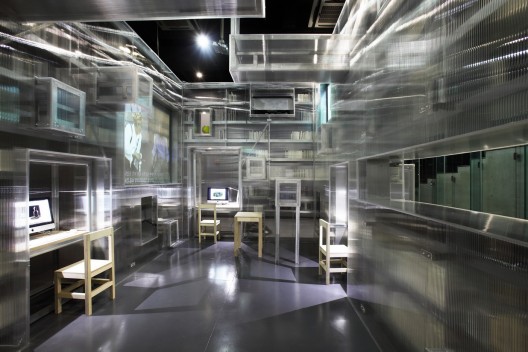
4. Production Lab – Inside the machine is reading, installation, video laboratories, and a space also for debates and group workshops.
5. “Representation Cells” – Content is also generated by users who can contribute to the information exchange. Small spaces or vitrines are made available for public display.
6. Library “Machinettes,” The Propagation Aides – Parts of the machine can detach as independent modules and can freely travel to other rooms or even outdoors to perform communicative functions, such as video projections or sound performances.
Architects: N H D M / Nahyun Hwang + David Eugin Moon
Location: 85 Sanggal-dong, Giheung-gu, Yongin-si, GyeongGi-do, South Korea
Client: Nam June Paik Art Center
Program: Art/Media Library
Status: Opened 2011
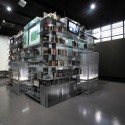  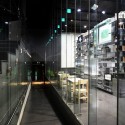    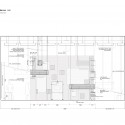  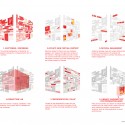 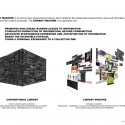
Friday, September 14. 2012
Via MIT Technology Review
-----
The Internet is both a utility and a medium. Only one of these things is exciting.
|
You know what's cool? Getting attention for your startup because this guy played you in a movie.
|
So Sean "You know what's cool? A billion dollars" Parker just declared the Internet boring! Then Brian Lam said non monsieur, you're the one who is boring.
Attention conservation notice: If you're not asleep or clicking over to Buzzfeed already, the boring one is you.
Parker just launched the last thing anyone should expend resources on given the limited time we have left on this dying planet: a Chatroulette clone called Airtime. Like its predecessor, it's about to fill up with people's genitals, because apparently its genitalia-detection algorithm doesn't work.
About the only thing of value to come out of this bonfire of investor cash is the inevitable pile-on that will follow Parker's comment. So, is the Internet boring? I say yes.
The Internet is both a utility and a medium. Only one of these things is exciting.
I have the luxury of writing for geeks whose job it is to get excited about complicated systems like the Internet, but let's face it, the more mainstream it becomes, the more the best part of the web, "geek culture," will be divorced from the web itself. In ways large and small, it's already happening. TMZ is the traffic monster, not Slashdot.
As a generator of profoundly new ideas, the web is dead. Reading Techcrunch these days is an exercise in postmodernism. (A startup that gamifies the job search gets $21 million in funding. Really?) All the innovation is in mobile, which is why Facebook is boring but Instagram is cool and therefore worth almost as much as a company that puts robots on top of thousands of pounds of high explosives and successfully flies them to the International Space Station.
As a medium, the web just kind of replaced all the other stuff that came before. If you were excited about magazines in the 90's, well, they still exist! Yeah, they're kind of different, and people who write for them have to put up with trolls in the comments, but otherwise, it's not as different as all the navel-gazing media writers would have you believe.
On the other hand, as a utility, there's hardly been a more exciting time to be on the web. It's the universal glue that binds everything else together, and mastery over its increasingly arcane ways is the ticket to participating in whatever remains of the middle class after we're done socializing all the costs of our Internet-speed financial system. But like I said, this utility function of the Internet is increasingly irrelevant to the ever large swath of humanity that relies on it. It's like asking people to get excited about civic infrastructure. (Which is awesome! This book changed my life.)
So, Internet = boring? Yes, absolutely. Now that the novelty has worn off, all we've really got is each other, saying the same ridiculous and mundane things we've always said. It remains the case that hell is other people.
Monday, April 04. 2011
Via OWNI
-----
by Marie D. Martel
Nous dirigeons-nous vers une technoculture du prêt, du partage, du streaming ?
Trop d’objets autour de nous, trop de bruit dans notre champ visuel, dans nos agrégateurs, dans nos résultats de recherche, trop de super-butinage (power-browsing), trop consommer, accumuler, remplir, excéder, évaluer, élaguer, se débarrasser, recycler-réduire-réutiliser, ouvrir la fenêtre, pas quinze fenêtres, respirer, relaxer, se vider l’esprit. C’est le printemps et une saison nouvelle qui s’annonce aux teintes discrètes (chromophobes ?) du néominimalisme.
After the bacchanal of post-modernism, the time has again come for neo-minimalism, neo-ascetism, neo-denial and sublime poverty. (Juhani Pallasmaa, cité dans Wikipedia)
ou encore :
By definition, « neo-minimalists » don’t have an overabundance of things in their lives. But one thing they tend to have more and more of these days is visibility. Recently, The New York Times talked to some people participating in the 100 Thing Challenge about how it has affected their lives; The BBC looked into the « Cult of Less; » and here on Boing Boing, Mark has beengetting down to the nitty-gritty of what the « lifestyle hack » involves. The common thread here is a growing number of people are realizing that our mountains of physical stuff are actually cluttering up more than just our houses. »
Cet extrait provient d’un article publié sur Boing Boing (traduit dans Le Courrier International), dans lequel Sean Bonner explore la dématérialisation ou la décroissance matérielle comme une possibilité issue des technologies actuelles et qui nous permet de reconsidérer nos interactions avec le monde et les autres en favorisant l’expérience plutôt que la consommation. À Toronto, le même auteur a aussi animé une présentation [en] sur le courant des technomades.
L’usage de circonstance par le prêt, le partage, le streaming
D’autres journalistes, comme Ramon Munez d’El Païs ont, dans la même perspective, élaboré l’idée que la propriété est un fardeau et que l’avenir de la consommation de la culture n’est plus lié à la propriété mais à l’usage de circonstance par le prêt, le partage, le streaming :
Après avoir été pendant trois siècles la valeur suprême de la civilisation occidentale, la propriété cesse d’être à la mode. Ne vous y trompez pas : il ne s’agit pas d’un retour du communisme ou d’une vague de ferveur qui nous ramènerait au détachement matériel des premières communautés chrétiennes. Ce sont le capitalisme lui-même, son incitation permanente à consommer et les technologies liées à Internet qui viennent bousculer des habitudes que l’on croyait bien enracinées. À quoi bon posséder des biens, les stocker, les entretenir, les protéger des voleurs, lorsqu’on dispose d’une offre illimitée de produits et de services accessibles en quelques clics ou moyennant la signature d’un contrat de location ?
Si cette tendance ne se limite pas au numérique, c’est sur Internet que la révolution est le plus avancée. Le téléchargement de contenus cède du terrain au streaming [diffusion en continu], c’est-à-dire à la reproduction instantanée de musique et de vidéos sans qu’il soit besoin de les conserver sur le disque dur de l’ordinateur. Des milliers de sites, légaux et illégaux, proposent un catalogue illimité de logiciels, films, morceaux de musique et jeux vidéo. Le succès du site de musique suédois Spotify ou du portail espagnol de séries télévisées Seriesyonkis vient bousculer les habitudes des consommateurs.
YouTube, le célèbre portail de vidéos en ligne de Google, est le symbole de la révolution en marche. Ses chiffres laissent pantois. Sur toutes les vidéos regardées chaque mois aux États-Unis, 43% (14,63 milliards) sont diffusées par YouTube, selon la société d’études de marché comScore. YouTube est suivi de près par Hulu, un site de streaming qui propose gratuitement des films et des séries télévisées. Avec 1,2 milliard de vidéos regardées, Hulu dépasse non seulement des monstres d’Internet comme Yahoo! ou Microsoft, mais aussi les portails de chaînes et de studios comme Viacom, CBS ou Fox.
D’après une étude sur le paysage audiovisuel espagnol réalisée en 2010 pour le compte de l’opérateur Telefónica et de la chaîne de télévision privée Antena, 3, 30% des internautes espagnols déclarent télécharger moins de fichiers, tandis que la moitié d’entre eux assurent que le streaming est leur manière habituelle de consommer des contenus audiovisuels sur Internet. “On constate un essor du streaming depuis au moins le printemps 2009”, assure Felipe Romero, l’un des auteurs de l’étude. “À court terme, les deux méthodes – téléchargement et streaming – vont coexister, mais il est clair que la seconde va prendre de plus en plus d’ampleur.”
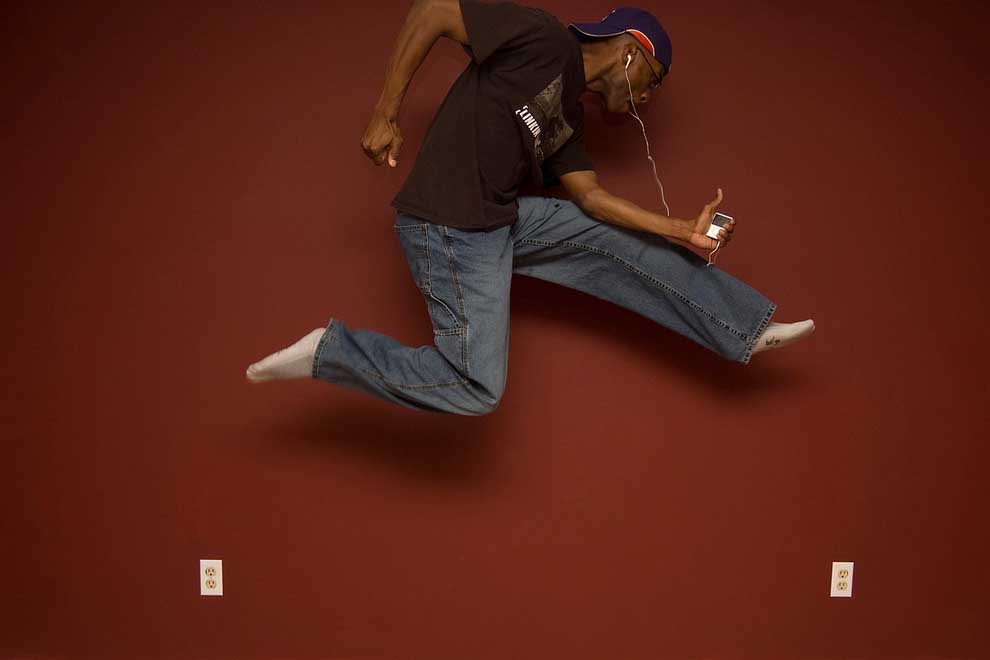
Sur le blog Agnostic, May Be, on mentionne également cet article qui témoigne de l’émergence de la culture du partage dans le Time [en] :
[T]he ownership society was rotting from the inside out. Its demise began with Napster. The digitalization of music and the ability to share it made owning CDs superfluous. Then Napsterization spread to nearly all other media, and by 2008 the financial architecture that had been built to support all that ownership — the subprime mortgages and the credit-default swaps — had collapsed on top of us. Ownership hadn’t made the U.S. vital; it had just about ruined the country.
L’étape suivante franchie par le blogueur Andy Woodworth [en] (incidemment élu dans le palmarès 2010 des Shakers and Movers [en]) m’intéresse tout particulièrement. Il fait l’hypothèse qu’en ce moment l’attrait pour les bibliothèques reposerait peut-être moins sur la récession économique que sur l’accroissement du nombre de gens qui préfèrent emprunter plutôt que posséder.
L’émergence de cette culture suggère des possibilités et des tendances sur lesquelles les bibliothèques pourraient largement capitaliser, dit-il. Comment ? Pas seulement en incarnant elles-mêmes les instances équipées pour prêter des documents à partir de leurs collections mais peut-être surtout en se positionnant comme des facilitateurs, ou des médiateurs, capables de négocier et de supporter les citoyens en vue d’accéder aux ressources disponibles dans la déferlante du web.
Mais la question la plus évidente est la suivante : est-ce que les bibliothèques seront en mesure de profiter de l’apparition de cette société du prêt et du partage ? Elles apparaissent elles-mêmes souvent éreintées par les résistances, trop déboussolées pour servir de guide à qui ce soit, sans vision, sans plan pour penser la culture numérique au-delà de cet effort qui les amène à prononcer et à servir à toutes les sauces, le mot magique de la « bibliothèque numérique ».
|

















